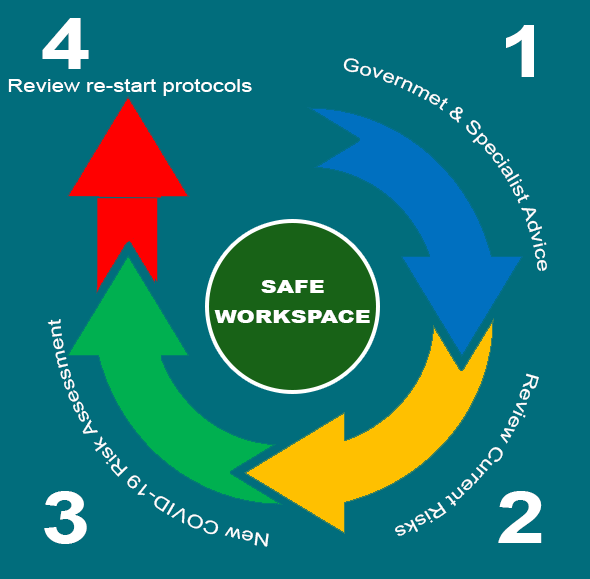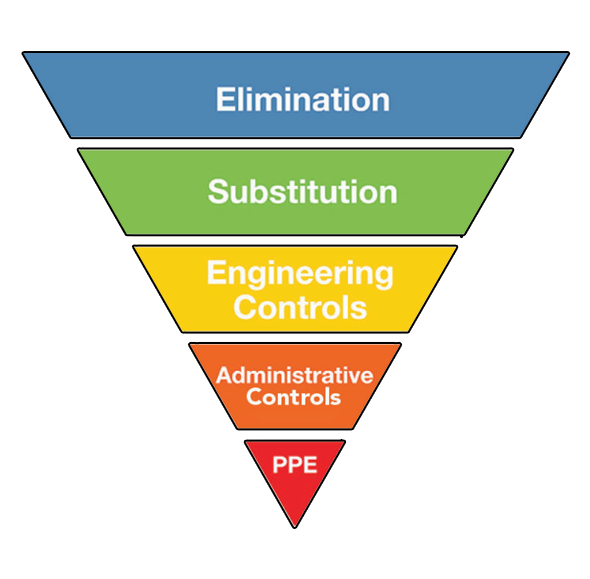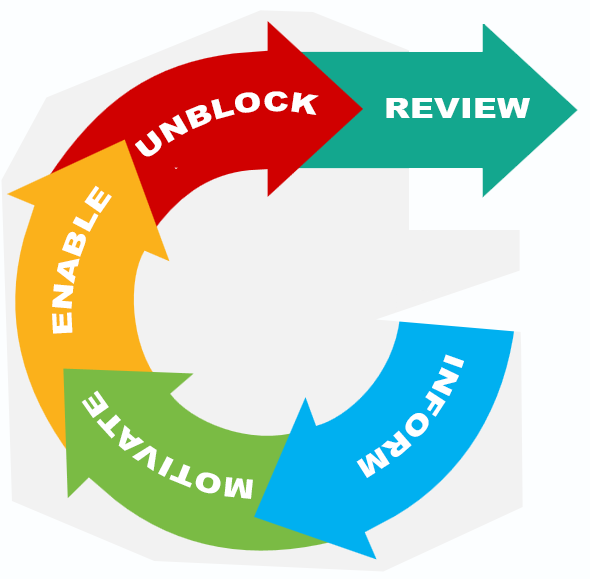
Coronavirus (COVID-19) - Risk Assessment
Site Secure COVID-19 - Risk Assessment
Putting your company's name to an off the shelf risk assessment would not satisfy the law - and would not protect your employees - Every business is different.Integrated Human Factors will visit your premises and complete a professional risk assessment for working with COVID-19.
Ensure your business is SAFE for your workforce AND your customers.
Open the doors to your business with confidence that you have assessed & addressed COVID-19 risks.Display our C19 Risk Assessment Certificate to show customers & employees.
Request a call back about a Coronavirus (COVID-19) - Site Secure Risk Assessment.
Contact IHF LTD to discuss a COVID-19 risk assessment.
Tel: 0131 201 2086
email: covid19@ihf.co.uk
Reassure customers and encourage business growth.
UNDERSTAND THE RISKS TO YOUR ORGANISATION
Risk assessment covering exposure to Covid -19 will vary between organisations. Healthcare workers, retail cashiers, home delivery drivers, utility engineers, instructors, and construction workers have different exposure to this risk.
As isolation measures are eased and people start to return to work, organisations and businesses will need to complete Covid -19 risk assessments. As an employer, you have a legal responsibility to protect workers and others from risk to their health and safety. SALT Services can provide you with the guidance and confidence to get your businesses back to work safely, ensuring your premises, staff and customers are protected as far as reasonably practicable.
As isolation measures are eased and people start to return to work, organisations and businesses will need to complete Covid -19 risk assessments. As an employer, you have a legal responsibility to protect workers and others from risk to their health and safety. SALT Services can provide you with the guidance and confidence to get your businesses back to work safely, ensuring your premises, staff and customers are protected as far as reasonably practicable.
Risk Based Approach to Restarting Work
Understanding the tasks or activities is vital to assess exposure and to qualify any subsequent control decisions. Before any risk assessment is undertaken, our assessor must first ask:
- Who is doing what and how?
- Where they are doing it?
- Why they are doing it?
- What they are using?

Safe Working Practices
The initial focus will be on creating a workplace that is as safe as practicably possible from COVID-19; new safe working practices will need to be introduced. They will need to be robust and flexible to remain fit for purpose as government and specialist advice is announced.
Understanding how COVID-19 is spread and how control measures work is key to preventing infection. Any risk assessment must recognise the virus as a ‘hazard’ and reflect that the virus is spread in tiny water droplets that are expelled from the body through sneezing, coughing, talking and breathing.
People can catch the virus if they breathe in these droplets from an infected person or from droplets that land on objects and surfaces such as tables, doorknobs, windows, and handrails etc.
People can become infected by touching these objects or surfaces, then touching your eyes, nose or mouth. The risk assessment should conclude that if it is passed from one person to another, while many survive infection, some may die from the disease. It should be regarded as a high hazard.
COVID-19: How It Spreads and How to Control It
Understanding how COVID-19 is spread and how control measures work is key to preventing infection. Any risk assessment must recognise the virus as a ‘hazard’ and reflect that the virus is spread in tiny water droplets that are expelled from the body through sneezing, coughing, talking and breathing.
People can catch the virus if they breathe in these droplets from an infected person or from droplets that land on objects and surfaces such as tables, doorknobs, windows, and handrails etc.
People can become infected by touching these objects or surfaces, then touching your eyes, nose or mouth. The risk assessment should conclude that if it is passed from one person to another, while many survive infection, some may die from the disease. It should be regarded as a high hazard.

Risk Assessment
The main focus or aim of your COVID-19 Risk Assessment will be on applying or increasing measures that will restrict or stop the transmission of the virus. Like most health risks, reducing the risk from COVID-19 involves the use of the hierarchy of controls.
Elimination: is the best form of control but right now there is no vaccine so there is little that can be done right now to mitigate against it.
Substitution: replacing the virus for something less harmful is not possible at this time and is also not applicable.
Engineering controls: involve isolating employees from work related hazards such as placing a physical barrier between the person and the hazard. For example placing plastic screens between people (e.g. cashier points in shops) will interrupt the flow of air from one person to another and therefore provide protection. Other engineering controls that may be considered is the use of ventilation and filtrations systems.
Administrative Controls: provide the best options for most organisations. The risk assessment must consider how you will keep your workplace and equipment clean, adjust working practices and ensure people are safe. Some additional considerations and questions include:
Substitution: replacing the virus for something less harmful is not possible at this time and is also not applicable.
Engineering controls: involve isolating employees from work related hazards such as placing a physical barrier between the person and the hazard. For example placing plastic screens between people (e.g. cashier points in shops) will interrupt the flow of air from one person to another and therefore provide protection. Other engineering controls that may be considered is the use of ventilation and filtrations systems.
Administrative Controls: provide the best options for most organisations. The risk assessment must consider how you will keep your workplace and equipment clean, adjust working practices and ensure people are safe. Some additional considerations and questions include:
- Can you redesign the workplace to maintain social distancing?
- Can you reschedule or postpone meetings
- Can you utilize multiple rooms to spread employees out?
- Can some employees continue to work from home?
- Do you have places where staff/customers will find it difficult to avoid one another (e.g. security points, lifts, stairs, lobbies, canteens, toilets, resource rooms, hot desks)?
- Can you provide more hand washing or sterilisation facilities around the workplace?
- Have you noted the places where most people commonly touch?

Personal Protective Equipment (PPE):
As with all risk assessments, PPE remains the last resort. It is considered the weakest control because it relies on people using it correctly. It introduces many possibilities for error: being the right specification, its cleanliness, its storage, its replacement and availability. PPE should not be used as an alternative to social distancing. The extensive use of PPE throughout the world during the Covid-19 crisis has caused a shortage or at least significant delays in acquiring it. Ensuring that all health and safety risks are adequately controlled when your usual PPE supply is temporarily unavailable will require some special input to ensure that the protection provided by the alternative PPE or ways of working does not put workers at risk. This should also be factored in to the risk assessment and can be mitigated with measures such as working from home, further reducing staff numbers or closure of the premises until PPE stocks are replenished.
As with all risk assessments, PPE remains the last resort. It is considered the weakest control because it relies on people using it correctly. It introduces many possibilities for error: being the right specification, its cleanliness, its storage, its replacement and availability. PPE should not be used as an alternative to social distancing. The extensive use of PPE throughout the world during the Covid-19 crisis has caused a shortage or at least significant delays in acquiring it. Ensuring that all health and safety risks are adequately controlled when your usual PPE supply is temporarily unavailable will require some special input to ensure that the protection provided by the alternative PPE or ways of working does not put workers at risk. This should also be factored in to the risk assessment and can be mitigated with measures such as working from home, further reducing staff numbers or closure of the premises until PPE stocks are replenished.
Safe Restart Protocols & Employee Mental Health
Additional considerations should also be given to the mental health of employees returning to work.
Returning to work will be positive experience but is likely to be a stressful one. Staff will have to know and how to implement the new safe working practices they need to apply at work; this will also add additional stressors.
Some employees may unfortunately have had to deal with bereavement or have recovered from the Covid-19 virus. Always set SMART (Specific Measurable Achievable Realistic and Timely) objectives, taking into account the stress and factors associated with returning to work.
Returning to work will be positive experience but is likely to be a stressful one. Staff will have to know and how to implement the new safe working practices they need to apply at work; this will also add additional stressors.
Some employees may unfortunately have had to deal with bereavement or have recovered from the Covid-19 virus. Always set SMART (Specific Measurable Achievable Realistic and Timely) objectives, taking into account the stress and factors associated with returning to work.
Communication, Informing & Training (CIT)
Communication, information and training are essential if new control measures are to be effective.
This reflective methodology should be built-in to any return to work strategy to ensure employees and customers feel valued and that any concerns can be raised without prejudice. SALT’s CIT model (inform, motivate, enable, unblock and review).
This reflective methodology should be built-in to any return to work strategy to ensure employees and customers feel valued and that any concerns can be raised without prejudice. SALT’s CIT model (inform, motivate, enable, unblock and review).
- Notify - It is imperative that employees understand the what, why and where to all the changes are being introduced to make their workplace or café safer.
- Motivate - In many cases it will not be necessary to motivate people to comply with the changes. However, you should try to ensure that staff are motivated rather than just instructing them to comply. Motivation to implement controls can help induce self-regulation of the controls in a workforce.
- Support - You should fully enable workers to implement any changes that you are proposing. This means making the changes easy to implement.
- Unblock - Look for items which block the implementation of changes and try to remove these blockages. E.g. identify monotonous tasks which do not reduce risk and reduce morale.
- Review/ Reflect - Review how effective the changes have been and revisit the information, instruction and training.
